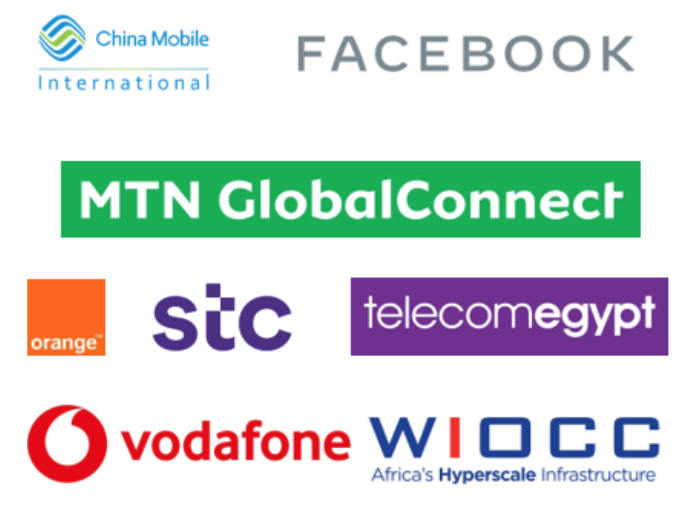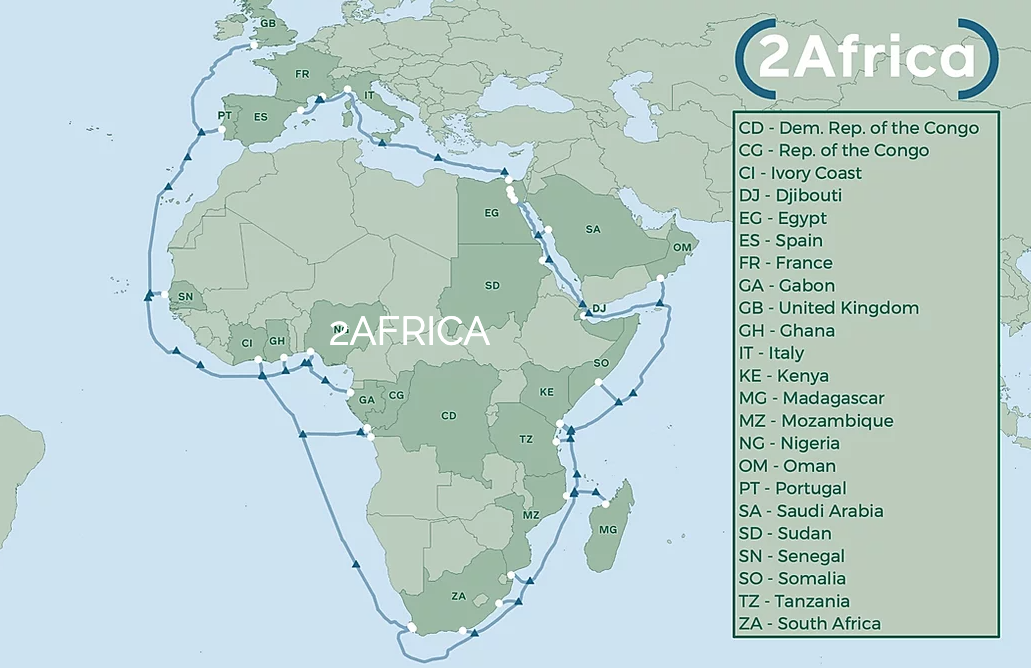
Facebook has announced a partnership with leading African and global operators to build 2Africa, the most comprehensive subsea cable to serve the African continent and the Middle East region. The cable is one of the largest subsea cable projects in the world and will interconnect 23 countries in Africa, the Middle East, and Europe.
At 37,000 kilometres long, 2Africa will provide nearly three times the total network capacity of all the subsea cables serving Africa today. When completed. This means this cable along would double the internet capacity to Africa, as well as improve the redundancy and reliability across Africa. It would support further growth of 4G, 5G, and broadband access for hundreds of millions of people across Africa.
The 2Africa partnering companies are China Mobile International, Facebook, MTN GlobalConnect, Orange, stc, telecom egypt, vodafone, and WIOCC.

In Africa, 2Africa will land directly in the following 16 countries:
- The Democratic Republic of the Congo
- Republic of Congo
- Cote d’Ivoire
- Djibouti
- Egypt
- Gabon
- Ghana
- Kenya
- Madagascar
- Mozambique
- Nigeria
- Sudan
- Senegal
- Somalia
- Tanzania
- South Africa
The other 7 2Africa landing countries outside Africa are:
- Spain
- France
- United Kingdom
- Italy
- Oman
- Portugal
- Saudi Arabia
According to Facebook, service providers will be able to obtain capacity in carrier-neutral data centres and open-access cable landing stations on a fair and equitable basis in the countries where the 2Africa cable lands. The first subsea cable system to seamlessly connect East and West Africa across a single open system, 2Africa will enable new avenues of communication from coast to coast across Africa.
“The launch of 2Africa enables us to offer our customers seamless connection between Africa and Europe, together with our SEA-ME-WE 5 and AAE-1 subsea cable resources to further extend to Asia, which is an important milestone of our global development strategy,” said Jessica Gu, Director & Chief Technology Officer of China Mobile International. “The utmost capacity and faster transmission allows us to satisfy the needs of African nations today and in the future, reflecting our firm commitment to building a global digital life.”
“We’re excited to be collaborating with our 2Africa partners on the most comprehensive subsea cable that will serve the continent,” said Najam Ahmad, Vice President, Network Infrastructure at Facebook. “2Africa is a major element of our ongoing investment in Africa to bring more people online to a faster internet. We’ve seen first-hand the positive impact that increased connectivity has on communities, from education to healthcare. We know that economies flourish when there is widely accessible internet for businesses. 2Africa is a key pillar supporting this tremendous internet expansion as part of Africa’s surging digital economy.”
According to Frédéric Schepens, CEO of MTN Group’s wholesale operation, MTN GlobalConnect, “MTN GlobalConnect is delighted to participate in this bold 2Africa subsea cable project. This initiative complements MTN GlobalConnect’s terrestrial fibre strategy to connect African countries to each other and to the rest of the world. We are proud to be playing a key role in providing the benefits of a modern connected life – a core MTN belief.”
Technological advancements have increased the efficiency of this project. It is more resource-efficient fibre optic cable by implementing Spatial Division Multiplexing (SDM1) technology. SDM1 is the latest innovative technology currently available for submarine cables. With up to 16 fibre pairs, 2Africa will allow for far greater capacity.
One of the most important features of the 2Africa cable is that it was designed with resiliency in mind to attain optimal performance. The cable design itself provides an increase of 50 per cent in burial depth — up to three meters — to ensure the highest availability with greater protection against damage. In addition, we designed the cable routing using advanced techniques to avoid areas of known subsea disturbance to ensure the highest levels of availability.
The project completion date is currently in early 2024.




